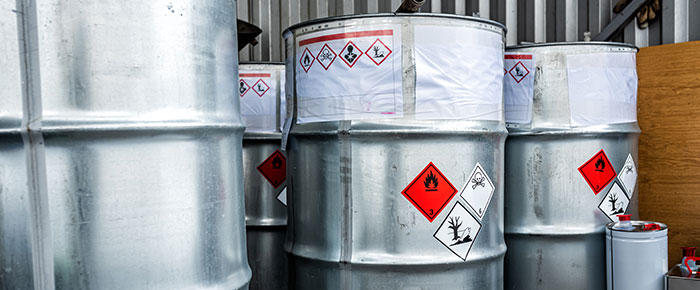
Laboratories frequently utilize an array of hazardous lab chemicals, and while experimenting with them represents the “easy” part, safely disposing of them can often cause logistical nightmares. Many agencies, like the Occupational Safety and Health Association (OSHA) and the Environmental Protection Agency (EPA), have provided guidance over the years about safe chemical disposal. Still, each lab has different requirements and employs varying mixtures of these hazardous chemicals, necessitating additional measures to ensure the safety of not only staff but the environment as well.
Characterize and track all chemicals
Setting up a virtual database of chemicals via inventory management software is an essential first step to proper disposal. Ideally, this software should be synced with a laboratory management information system (LIMS) to adequately track all chemical usage (including volumes and concentrations) during experimentation and other lab processes. In the database, critical safety information should be listed in addition to expiry dates, with reminders of when a chemical is about to expire.
There are two primary methods of tracking chemicals via an inventory management system:
- Radio-frequency identification (RFID): Recent advances in RFID technology have made it affordable and convenient to use in a lab setting, especially for chemical tracking and tracing. The main benefits of RFID include the ability to scan multiple items simultaneously without the need for direct line-of-sight. Tags and labels can also be re-encoded and afford a higher level of security than other tracking methods. Any label can now be outfitted with an RFID inlay, which means that RFID can be added to chemical-resistant labels that will withstand exposure to xylene, toluene, and other harsh organic solvents.
- Barcodes: Barcode labels have a few advantages over RFID, including standardized grading to ensure barcodes are consistently and accurately read, which can be assessed via barcode verification. In addition, nearly any printer can be used to generate barcodes, though we recommend that for identifying chemicals, a thermal-transfer printer be used. This type of printout generally provides optimal protection against harsh chemicals and works on a print-as-you-go basis using rolls of labels, so there is less waste compared with laser or inkjet labels.
Note that both RFID and barcodes can be used together. This is possible as the facestock of RFID labels can be printed on using RFID printers that can both encode RFID and print thermal-transfer printouts.
Identify waste management administrators
As recommended by the EPA, most institutions will have administrators in place to identify and manage large batches of hazardous chemicals. The EPA specifically states that for labs with chemical or radiological waste, a “waste broker” should be appointed to assist in profiling, manifesting, and inspecting waste prior to shipment along with a waste hauler capable of properly handling the waste.
Clean appropriately
Chemicals should be disposed of safely and securely in dedicated receptacles. Hazardous chemicals should never be poured down the sink. In certain cases, dumping hazardous chemicals down the drain is permitted if concentrations are below acceptable levels. However, deliberately diluting them to reach below that threshold is illegal in most countries.
Once containers are emptied of their respective hazardous contents, cleaning them of residual chemical waste can be just as stringent as disposing of the chemical itself. Many chemicals produce dangerous vapors that, when inhaled, can cause damage even in small quantities. The University of California at San Diego has written a step-by-step procedure for cleaning these containers:
- Determine if the contents of the container register as extremely hazardous waste by reviewing this list of Known Hazardous and Extremely Hazardous Wastes.
- If the chemical is considered extremely hazardous waste, the container should be collected by the Environment, Health and Safety (EH&S) department and disposed of by a licensed company.
- If the chemical is considered “extremely hazardous,” the container should NOT be rinsed. Otherwise, triple rinse it with water or a cleaning solvent and air-dry it prior to disposal.
Train personnel
Staff must be trained on how to dispose of all hazardous lab chemicals properly. While that may seem obvious, lab training too often focuses on learning new experimental methods, with little mention of handling and disposing of harsh chemicals. For large institutions, members of the Health, Safety & Environment Department may provide guidance related to the disposal of specific chemicals via training sessions. These sessions should be integrated into the lab’s workflow and can be organized in the lab or throughout the department via dedicated lab booking software, such as Clustermarket.
Once the staff is trained, professors, associates, and technicians should continually review safety procedures to ensure regulations are being followed.
LabTAG by GA International is a leading manufacturer of high-performance specialty labels and a supplier of identification solutions used in research and medical labs as well as healthcare institutions.
References:
- US Environmental Protection Agency (EPA). Laboratory Environmental Sample Disposal Information Document. Cincinnati, OH; 2010.